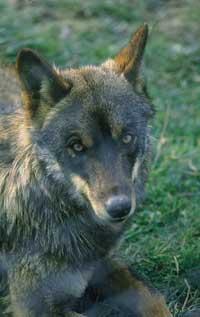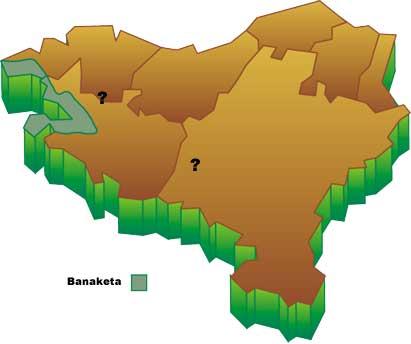Then comes the wolf!
1996/11/01 Elhuyar Zientzia Iturria: Elhuyar aldizkaria
Some with joy and others with fear and concern, we have been able to read a few months ago that in Urbasa in Navarra and in the Gipuzkoana part of Aralar several wolves have appeared and have killed numerous sheep.
Joyfully, the reappearance among us of this emblematic species of mammals that has disappeared in our mountains, because the brutal transformation that has suffered our environment in recent years has ceased to isolate itself completely and shows that it is recovering a certain ecological balance, which opens a small window to hope.

Fear and concern have come from the pastors and political and technical leaders of these mountains. That of the shepherds is understandable, since only for centuries have they faced this powerful carnivore defending their flocks and, ultimately, their economic support. Since the wolf disappeared, the life of the shepherds has greatly improved in our mountains, they release their flocks with total tranquility and do not have to worry about them during the nights.
The case of others is less understandable. The presence of the endangered wolf in Europe (Canis lupus) in the mountains of Euskal Herria, which in addition to being an indicator of a healthy nature, is a treasure in our ecological heritage. Our policymakers and technicians at their command do not have the same opinion apparently, as soon as they have known that the attackers of the sheep of Urbasa and Aralar have been the wolves, as they have taken steps to end them. In addition, although in recent years the presence of the wolf in Carranza and Álava Occidental is constant, in the recently published Autonomous Community of the Basque Country the wolf does not appear, which highlights the attitude of the administration towards the wolf.
It is unacceptable that when in some places of the Iberian Peninsula and Europe large amounts of money are being spent for the protection and recovery of this species, in Euskal Herria, it is only heard to kill in a couple of specimens.
How much money will the administration pay for the damages caused by wolves in Euskal Herria? Can measures of this type not be adopted if the money spent for this concept in the Autonomous Community of Asturias, with solid and stable populations of wolves, has not risen from 40 million?
In addition, it must be made clear that it is very difficult to consolidate stable populations of wolves in the mountains of Euskal Herria, since in addition to being socially appropriate, they are too small for an animal capable of traveling 80 kilometers for a night. Therefore, we could say that the presence of the wolf in Euskal Herria will be limited to a series of young wolves. Unfortunately, these young people are the ones who most harm the flocks, since the adults try to avoid the man and everything related to him.
Given all this, it is time to make sound and reasonable decisions:
- It should be clear that pastors should not pay for the damage caused by wolves. Therefore, a rapid and adequate compensation system must be developed so that the shepherds do not see the presence of the wolf in the mountains badly.
- For their part, the shepherds must also begin to take measures to reduce the damage of the wolf: take more care of the flock at night, put shepherd dogs to care for the flock, etc.
- And finally, carry out awareness campaigns to eliminate the pernicious and murderous image of the wolf, demonstrating that it is an indicator of the quality of nature.
Perhaps the time has come to remove stories like Txanogorritxu from our libraries.

Gai honi buruzko eduki gehiago
Elhuyarrek garatutako teknologia





